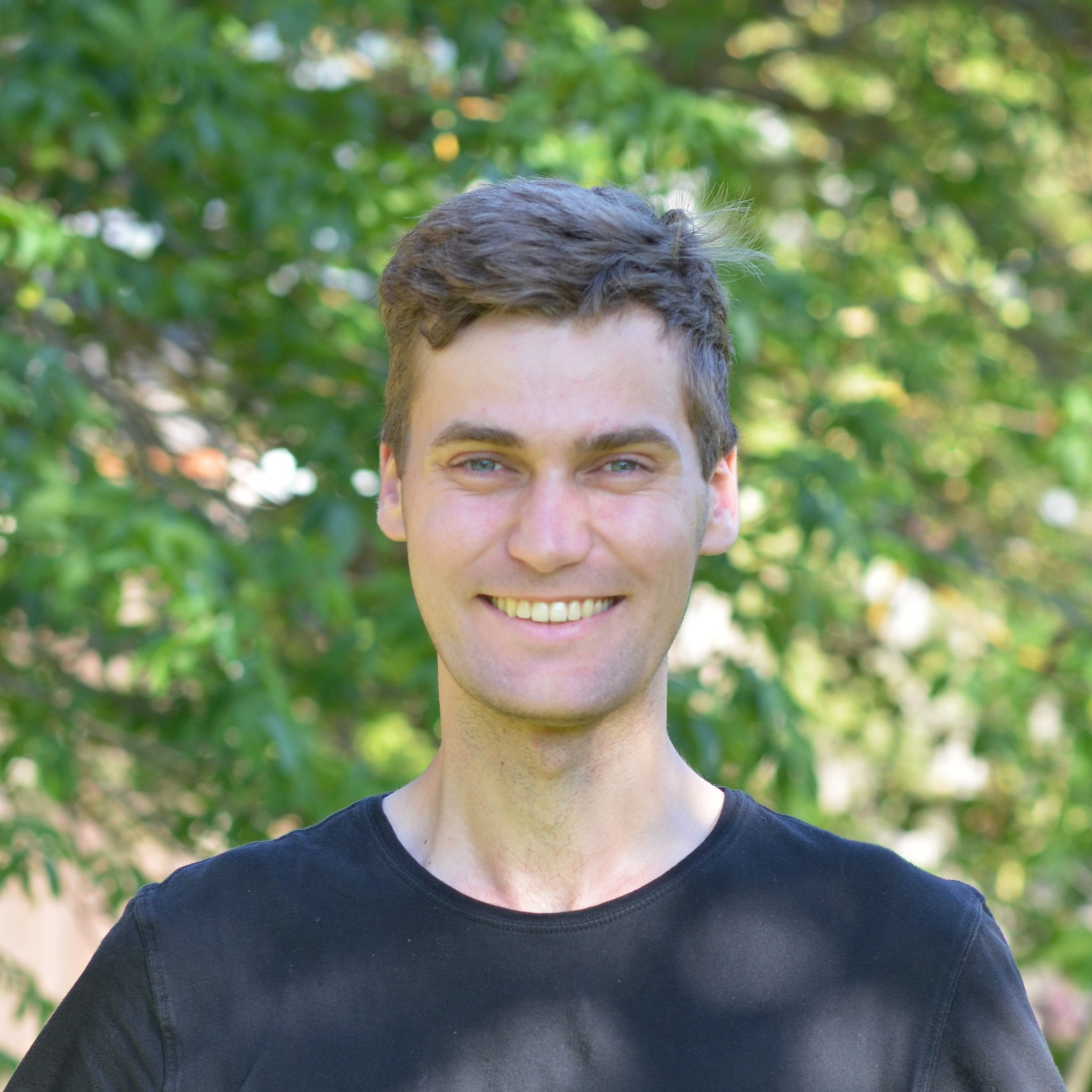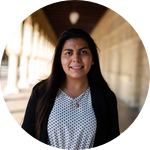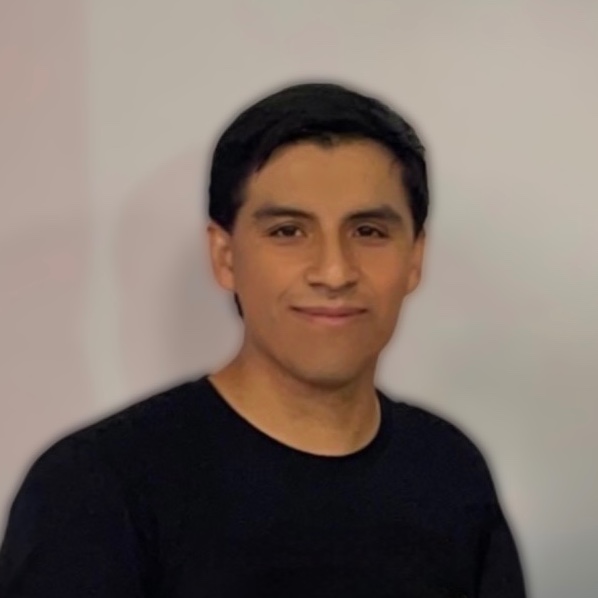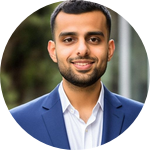About This Project
Ostomy bags are a daily medical necessity for 15 million people globally. However, these bags often delaminate from the skin, causing problematic leaks and requiring frequent bag replacement. Delamination between a flat adhesive bandage and a rounded stomach fundamentally results from an elastic buckling process driven by the geometric and elastic mismatches of the two components. The purpose of this study is to characterize this process to facilitate the design of better bags.
Ask the Scientists
Join The DiscussionWhat is the context of this research?
Ostomy bags are a daily medical necessity for roughly 15 million people globally who have had a section of intestinal tract removed, resulting in the intestine being rerouted through the abdomen where waste is ejected via a stoma. These bags adhere to a section of skin surrounding the stoma via an annular adhesive bandage, collecting waste and shielding the stoma from the broader environment. This serves to reduce infection while minimizing changes to the daily life of the patient. However, these bags are expensive making them inaccessible for lots of people, especially in underdeveloped countries. Also, the bags often delaminate from the skin, causing problematic leaks which lead to skin irritation and poor quality of life.
What is the significance of this project?
Delamination between a flat adhesive bandage and a rounded stomach (objects with intrinsically different Gaussian curvatures) results from a competition between adhesion and an elastic buckling process driven by the geometric and elastic mismatches of the bandage and substrate. This process is well characterized for a flat disk conforming to a rigid spherical substrate, but ostomy bags are necessarily annular while the abdomen is nonrigid and dynamically changes shape. The purpose of this study is to characterize the delamination process of ostomy bags from a substrate of varying shape as a function of their respective geometric and material properties. This work can then be extended to design a new class of low-cost ostomy bags that frustrate the delamination process.
What are the goals of the project?
We will run ostomy bags adhered to a human skin mimic through a representative set of shape, size, and curvature changes to characterize the delamination modes an ostomy bag typically takes. These shape changes can be effected via a linear stepper motor, custom 3d printed parts, and custom cast PDMS substrate base. We can backlight the ostomy bag to capture regions of delamination in sharp contrast on a color camera and analyze how the regions grow or change as the substrate cycles through a set of shapes repeatedly. With a comprehensive dataset of the most common failure modes, we can then test new bag designs which resist these modes using the same experimental apparatus.
Budget
-To understand the standard delamination challenge in ostomy bags, we will need to collect data on delamination of a set of bags representative of the standard of care under varying substrate geometries. The adhesive on ostomy bags weakens after delamination, so we will need a large number of bags. Ideally, the substrate should have similar material properties to human skin, so we will need a human or animal tissue mimic. The curvature in the substrate will be induced repeatedly by a high strength stepper motor for consistent repetitions of the same shape changes. In order to begin investigating new approaches to prevent delamination, the raw materials used in the bags such as the biocompatible adhesive used will be needed.
- To understand the experience and current ecosystem of ostomy bags in India, we will need to interview people living with ostomy bags. A visit to Mumbai (headquarters of the Indian Ostomy Bag Association) and Anantapur (rural India) would be crucial.
Endorsed by
 Project Timeline
Project Timeline
The research timeline will run from April 1st to June 6th, with a field trip in July. We will spend the first two weeks setting up the experimental apparatus, imaging system, and automated image processing pipeline. Then 3 weeks taking the baseline data for delamination of standard ostomy bags currently in use. Then 3 weeks will be used to examine variations on the standard bags with altered shapes, adhesive patterns, and young's modulus. The final week we will evaluate the best systems.
Apr 03, 2024
Project Launched
Apr 15, 2024
Set up experimental apparatus and processing pipeline
May 06, 2024
Take baseline delamination data and analyze efficacy
May 27, 2024
Run altered shape/material property bag delamination tests and analyze efficiency
Jun 06, 2024
Evaluate best systems and write up report
Meet the Team
Team Bio
Every member of our team brings a different set of skills, experiences and expertise to the table from design to medicine, physics and engineering. We are based on different sides of the world, Diego is in Peru, Ben, Anru, Elizabeth and Ivana are in California and Vaibhav is in India.
We all share the same vision and goal of designing a low-cost ostomy bag that does not leak.
Benjamin Foster
Postdoctoral scholar working under Professor Manu Prakash at Stanford University. Passionate about elasticity, nonlinear dynamics, and medical applications of physics.
Ivana Llobet
Biomedical engineer specialized in UX research in healthcare. Passionate about the intersection of healthcare, design and technology, Ivana likes to design solutions that are inclusive, patient-centered and cost-effective. She is starting the Biodesign fellowship at Stanford in august 2024.
Anru Tian
PhD student in Bioengineering at Stanford University with a passion for biotechnology and healthcare equity. Anru graduated from MIT with a degree in Biological Engineering and is a NSF GRFP fellow.
Elizabeth Palafox
Coterm student at Stanford University finishing undergraduate degree in Chemistry with a Biological Chemistry concentration and working on Masters in Bioengineering. Elizabeth plans to enter the medical field and cares about the connection between the social determinants of health and medical outcomes.
Diego Muñoz
Bioengineer specialized in Biotechnology and Design. Fellow at Stanford d.school University Innovation Fellows Program. Currently working on bioactive pH sensors and CRISPR/Cas9 in plant gene editing. Passionate about synthetic biology, electronic design, local innovation and entrepreneurship.
Vaibhav Sharma
I am an Entrepreneur by passion and chemical engineer by profession. My mission is to drive social change and create life-changing products. I have experience working in various sectors from affordable education to sustainable farming to consultancy and public policy.
Additional Information
In parallel to the lab experiment, we will be interviewing ostomates, healthcare professionals and medical device manufacturers in India. In July we would like to have a field visit to Mumbai to meet in person with the Indian Ostomy Bag Association, and to Anantapur, to visit the "Rural Development Trust" where we have identified they perform ostomy surgeries but people don't have access to the bags. We want to understand which solutions are currently used and which resources are available.
Project Backers
- 1Backers
- 100%Funded
- $5,750Total Donations
- $5,750.00Average Donation






